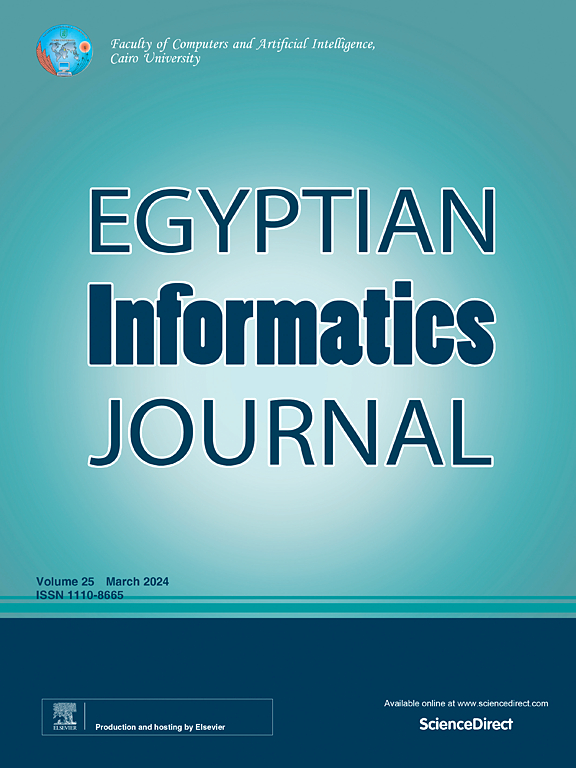AI-optimized breast cancer prognostics: Robust prediction with transformer-based lesion localization and hard voting classifier
IF 4.3
3区 计算机科学
Q1 COMPUTER SCIENCE, ARTIFICIAL INTELLIGENCE
引用次数: 0
Abstract
Breast cancer remains a significant threat to global health, driving the demand for more effective and prompt detection methods. AI-optimized deep learning models are revolutionizing mammography screening, by substantially improving breast lesion recognition and diagnosis accuracy. This research introduces a groundbreaking approach that leverages advanced deep-learning architectures to enable early and precise breast cancer prognostics. The study proposes a novel combination of scaling techniques, depth-wise convolution, and max pooling layers to enhance feature extraction from mammographic images, facilitating the detailed prognosis of intricate lesion patterns in both benign and malignant cases. The method efficiently eliminates redundant features, identifies the most important ones, and improves detection efficiency while reducing computational complexity compared to advanced models. To combat overfitting and integrate outputs from multiple models, a hard voting classifier is employed, ensuring fine-grained lesion detection and addressing the challenges of limited training data in medical imaging. The robust voting process leverages diverse augmentation techniques across large mammography datasets to provide comprehensive outcomes. Additionally, the Swin Transformer’s performance is evaluated against nonparametric statistical tests, validating its suitability for mammography image classification. The proposed model was evaluated using three public datasets, accurately detecting breast lesions with a sensitivity score of 99.31%. The approach achieved an impressive accuracy of 98.5%, with a standard deviation of 0.085 using 10-fold cross-validation, and an optimal AUC of 0.98. These results underscore the model’s effectiveness and robustness, particularly in data-constrained scenarios, making it a cost-effective solution for early breast cancer detection. Our findings highlight the transformative potential of AI-driven solutions in advancing breast cancer diagnostics and emphasize their importance in medical imaging applications.
人工智能优化的乳腺癌预后:基于变压器病变定位和硬投票分类器的鲁棒预测
乳腺癌仍然是对全球健康的一个重大威胁,促使人们需要更有效和更迅速的检测方法。人工智能优化的深度学习模型通过大幅提高乳房病变识别和诊断准确性,正在彻底改变乳房x光检查。这项研究引入了一种开创性的方法,利用先进的深度学习架构来实现早期和精确的乳腺癌预后。本研究提出了一种新颖的结合缩放技术、深度卷积和最大池化层的方法,以增强乳房x线图像的特征提取,促进良性和恶性病例复杂病变模式的详细预后。与先进的模型相比,该方法有效地消除了冗余特征,识别了最重要的特征,提高了检测效率,同时降低了计算复杂度。为了对抗过拟合和整合多个模型的输出,采用了硬投票分类器,确保了细粒度的病变检测,并解决了医学成像中训练数据有限的挑战。强大的投票过程利用大型乳房x光检查数据集的各种增强技术来提供全面的结果。此外,Swin Transformer的性能通过非参数统计测试进行了评估,验证了其对乳房x光图像分类的适用性。该模型使用三个公共数据集进行评估,准确检测乳腺病变,灵敏度评分为99.31%。该方法获得了令人印象深刻的98.5%的准确度,使用10倍交叉验证的标准偏差为0.085,最佳AUC为0.98。这些结果强调了该模型的有效性和稳健性,特别是在数据受限的情况下,使其成为早期乳腺癌检测的经济有效的解决方案。我们的研究结果突出了人工智能驱动的解决方案在推进乳腺癌诊断方面的变革潜力,并强调了它们在医学成像应用中的重要性。
本文章由计算机程序翻译,如有差异,请以英文原文为准。
求助全文
约1分钟内获得全文
求助全文
来源期刊

Egyptian Informatics Journal
Decision Sciences-Management Science and Operations Research
CiteScore
11.10
自引率
1.90%
发文量
59
审稿时长
110 days
期刊介绍:
The Egyptian Informatics Journal is published by the Faculty of Computers and Artificial Intelligence, Cairo University. This Journal provides a forum for the state-of-the-art research and development in the fields of computing, including computer sciences, information technologies, information systems, operations research and decision support. Innovative and not-previously-published work in subjects covered by the Journal is encouraged to be submitted, whether from academic, research or commercial sources.
 求助内容:
求助内容: 应助结果提醒方式:
应助结果提醒方式:


